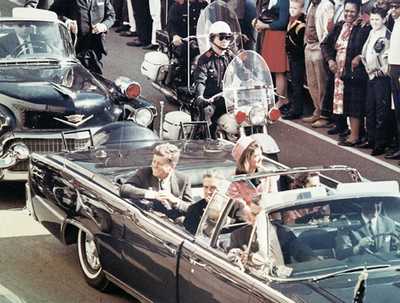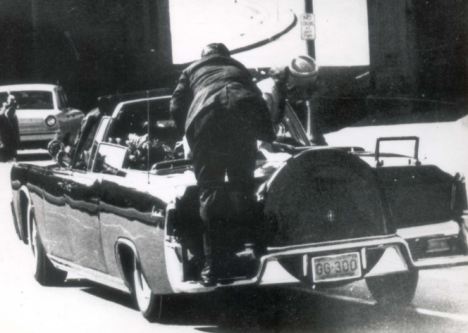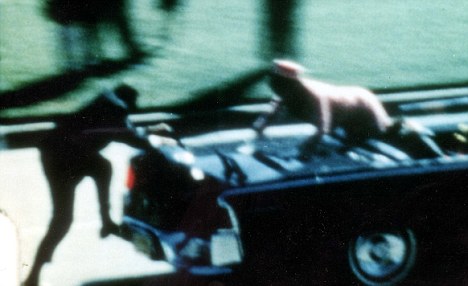
The U.S. Secret Service provided security for Pope Benedict XVI at the Papal Mass in Washington, D.C., on April 17, 2008. Although the agents have no official uniform and can be seen wearing anything from tuxedos to blue jeans, they are often identified by their dark sunglasses, listening devices, and lapel pins bearing the agency's gold star logo.
The United States Secret Service uses code names to refer to the President of the United States, his family, other officials, and places. Originally, these code names were designed to protect sensitive communications, back in the day before restricted communications were routinely encrypted. Nowadays, there is no need to keep these names secret. Nevertheless, The Secret Service who guards the First Family and other U.S. officials continues to use the code names for clarity, brevity, and tradition. (1)

The U.S. Secret Service Star Logo. The U.S. Secret Service protects the President and First Family, other officials of the U.S. government, and visiting dignitaries.
General Code Names
President of the United States: POTUS
First Lady of the United States: FLOTUS
Vice President of the United States: VPOTUS
The Obamas
Barack: Renegade
Michelle: Renaissance
Malia: Radiance
Sasha: Rosebud
The Bushes
George W.: Tumbler
Laura: Tempo
Barbara: Turquoise
Jenna: Twinkle
The Clintons
Bill: Eagle
Hillary: Evergreen
Chelsea: Energy
The Bushes
George H.: Timberwolf
Barbara: Tranquility
The Carters
Jimmy: Deacon
Rosalynn: Dancer
Amy: Dynamo

Secret Service agents respond to the assassination attempt on President Ronald Reagan by John Hinckley Jr. on March 30, 1981. President Reagan took a bullet in the abdomen but made a full recovery.
The Reagans
Ronald: Rawhide
Nancy: Rainbow
The Fords
Gerald: Passkey
Betty: Pinafore
The Nixons
Richard: Searchlight
Pat: Starlight
The Johnsons
Lyndon: Volunteer
Lady Bird: Victoria
Lynda Bird: Velvet
Luci Baines: Venus

A motorcade carries President John F. Kennedy and First Lady Jackie Kennedy through the streets of Dallas, Texas, on November 22, 1963. Texas Governor John Connally and wife Nellie ride in front of the Kennedys.

- Agent Hill heard the first shot that hit President Kennedy. Mr Hill is the figure in the famous Zapruder film of the killing which shows him climbing onto the back of the president’s limousine. “I heard the first shot, saw the president grab his throat, lurch left, and I knew something was wrong,” recalled Hill in the book, The Kennedy Detail. Jackie Kennedy can be seen crawling out the back of the car onto the trunk to get help for her slain husband, slumped in the seat.

Agent Hill got in the back seat with Mrs. Kennedy and the president and shielded them with his body on the way to Parkland Hospital.
The Kennedys
John F.: Lancer
Jackie: Lace
Caroline: Lyric
John Jr.: Lark
Other Individuals
Queen Elizabeth II: Kittyhawk, Redfern
Prince Charles: Unicorn
Frank Sinatra: Napoleon
Pope John Paul II: Halo
Sarah Palin: Denali
John McCain: Phoenix
Places
The White House: Castle
The Capitol: Punchbowl
(1) Source: Wiki “Secret Service Codename”





















